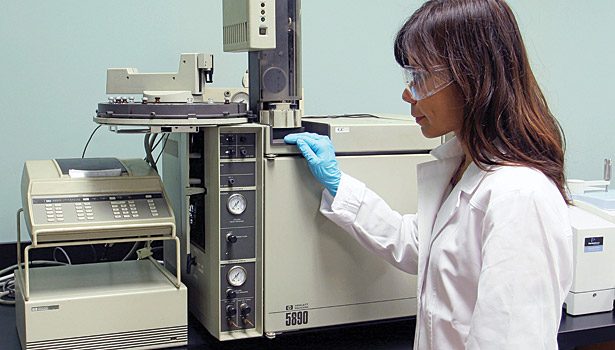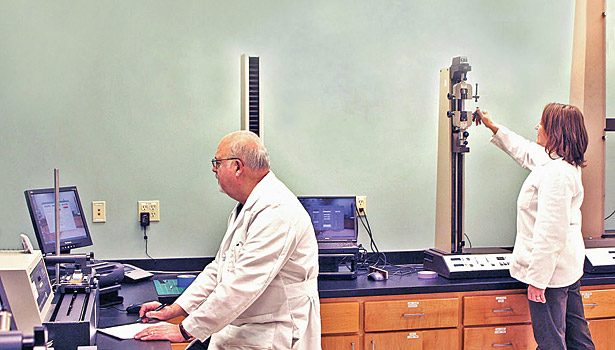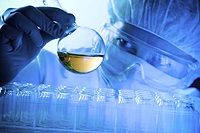Does the following scenario sound familiar? A marketing leader in your organization identifies a product line extension that will broaden the breadth of your portfolio, allow you to enter target market segments, and give your customers products they’ve been clamoring for—all while making a decent profit margin. All you need to do is import it, mark it up and sell it. Such a commercial move would not be a strain on your existing manufacturing organization; all that is required is a little paperwork and a distribution plan.
That’s all well and good—until you start selling the product and begin hearing feedback from the field that the product does not exactly work in the application. Instead, it goes into a highly specified industry that requires lot-to-lot traceability, etc. This simple business model suddenly turns organizations upside down, and the ancillary product line begins to pull resources away from your core business.
In a global economy, suppliers and customers are no longer separated by a short drive or flight, but by continents. Shipments are planned months in advance,
| In a global economy, suppliers and customers are no longer separated by a short drive or flight, but by continents. |
and orders are taken by the container load. A company may use email as the primary source of communication. Specifications and drawings may be written in a different language or using different units of measurement than the ones the buying entity is accustomed to.
If the product specifications are not clearly transferred between companies, a tremendous risk is created for both the buying and selling entities. This triggers the possibility for supply chain hiccups, strained customer relations, organizational confusion, transportation expenses, potential legal implications and overall reduced margins. One way to mitigate this risk is to establish an ongoing independent testing protocol.
HIDDEN COSTS
Many of the common drivers for insourcing from other regions include cost, risk aversion and raw material supply. When cost is being assessed, the typical factors of freight, duty and currency are included in analysis. However, one could argue that a significant factor of importing raw materials or finished goods is not included in the calculation. This includes indirect manufacturing support (e.g., purchasing, QA and trade compliance) that is in an overhead rate that generally gets overlooked when it comes to in-sourcing. In addition, if the particular company is insourcing and distributing the product as a product line extension, the margins are typically smaller than manufacturing onshore.
When the financial modeling has been completed and the focus shifts to commercialization, ongoing quality is often overlooked. A company may have performed an initial analysis to prove its concept, but how does it ensure that the newly imported materials are of the same quality of the prototypes that were created months earlier?
Testing serves as a reference point: a set of objective results for comparing incoming products and ensuring the quality of outgoing products.
- Testing is not difficult to do, and it does not have to be expensive.
- Testing is a way to understand the properties of your products and those of your competitors—an important means toward gaining a competitive edge in the marketplace.
- A well-designed testing program will repay your investment with additional margin points and reduced material claims. The larger and more thorough the program, the bigger the return on investment.
- Testing is a simple tool for learning from your products and experiences and those of others in your field. It is a tool that provides a baseline for future decisions and growth.
WHY INDEPENDENT?
An independent third party can play a key role in a company’s quality system. It can serve as an arbitrator in and settle any “he said, she said” claims without any bias. An independent lab can also ensure that the product you purchase is indeed the product you specified, including the chemical composition and performance. Studies performed by third parties sometimes confirm a company’s current speculation based on field feedback. In other cases, third-party testing can stop the introduction of products before they become an embarrassment to the company and create financial liability.
In addition, independent testing can serve as a check and balance and against an organization’s people and equipment that may or may not have the best practices in place. Independent testing of imported products also keeps an organization’s R&D focus on the products it is manufacturing locally without misplacing those valuable resources for supplier evaluations. Instead, the R&D team can focus on the development of its own product lines.
From a cost standpoint, investing in testing machines and/or employee training may not be in the financial or capital budget from year to year. In these cases, establishing a protocol with an independent lab provides a better return on investment. The cost for consistent expertise is relatively trivial in comparison to the size of the financial investment that is already on the line.
GETTING STARTED
So, where does one start? You may need to test characteristics when the product is applied on different substrates, depending on the end use of the product. You may also need to see how the characteristics change upon aging, either prior to application (as might be experienced sitting in a warehouse) or after application (how well it holds up in use).
The standard test methods of peel, tack, shear, and viscosity are not exclusive; they are simply the most common. Additional methods to measure the same or similar properties are available from ASTM, PSTC and TLMI. Test methods are also available from FINAT, AFERA and others. As the marketplace becomes more globalized, professional societies continue to try to find a common ground and establish universally accepted methods. Many of these organizations are working on the harmonization of standard test methods.
Other specialized tests are important when characterizing products that have been developed for a specific end use. Mandrel holding power; testing at high or low temperatures; testing after accelerated aging in heat, humid and UV environments; and shear adhesion failure temperature (SAFT) testing are a few of the special end use tests that should be included in benchmark testing for some products.
All testing must be performed a number of times on a given sample to be sure that the data produced is reasonably accurate and precise. Most of these tests are typically conducted with a minimum of five replicates per sample, sometimes more and occasionally less.
INDEPENDENT TESTING QUALITIES
In order to be accurate and significant, testing must meet at least four criteria. First, testing must be objective and quantifiable. Successful companies have learned to be objective with their results. This honesty allows them to see clearly and plan for the future based on the knowledge they have gained. The properties tested must be quantifiable in a reproducible manner. Benchmarking is not a set of subjective impressions of how a product looks, feels or smells. The quantification of the data demands that precision instrumentation be used. In addition, it is important that the equipment is accurately calibrated and recognized as suitable for the test. The reproducibility of the test methods must extend over time and with a diversity of operators.
Secondly, the properties being tested must be significant. Each test performed must be relevant to characterize a real-world property of the product. If color, tensile strength or adhesion over time is important for the product, test it. If it’s not, then don’t.
In addition, the product being tested must be representative of its group. If production material is the subject of the test, it must be a properly documented random sample. That is, its manufacturing control (date, lot number, etc.) is to be noted, but it should not be selected because it ran better than the product has for a long time. If it is a developmental product, it must represent material that at least can be reproduced.
Finally, all products should have similar histories. It would be unfair to compare a freshly manufactured product against one that has been in storage under unknown conditions for an extended period of time. This is where a testing protocol is critical to perform the test(s) the same way every time and document that conditions haven’t changed.
TESTING FACILITIES
Testing of this nature requires precision instrumentation: an adhesion/release tester, a shear tester, timers, tack tester, roll down equipment, sample cutters, analytical balance, precision dies, and an oven and micrometers, as well as a room with a controlled environment to house them. It is critical that the equipment and environmental conditions specified in the test methods are used for each test. This ensures a minimization of the measurement uncertainty. Through round-robin testing, we’ve learned that improperly maintained or calibrated equipment and an uncontrolled environment can adversely affect data to a significant degree.
Decisions based on the results of a benchmark study are only as good as the data. The knowledge that all testing was performed according to standard methods on suitable, accurate equipment allows decisions to be made with confidence.
The testing a company needs in order to compete and grow can be performed at a competitive price through an independent testing facility. By contracting with an independent laboratory, recognized in their field of specialization, manufacturers can be assured of impartial results.
If that laboratory is also nationally accredited, you can be confident that the results are accurate because the lab’s competency has been reviewed by a recognized third party. You can also count on their expertise to help you interpret the results.
For more information, contact Chemsultants International at (440) 974-3080, email the author at dwesterfield@chemsultants.com or visit www.chemsultants.com.




